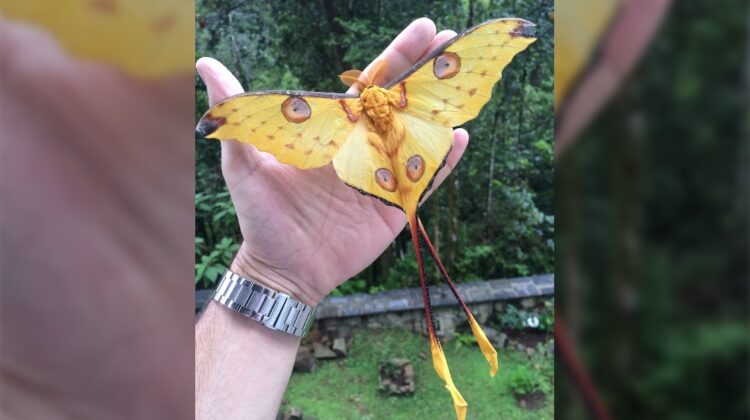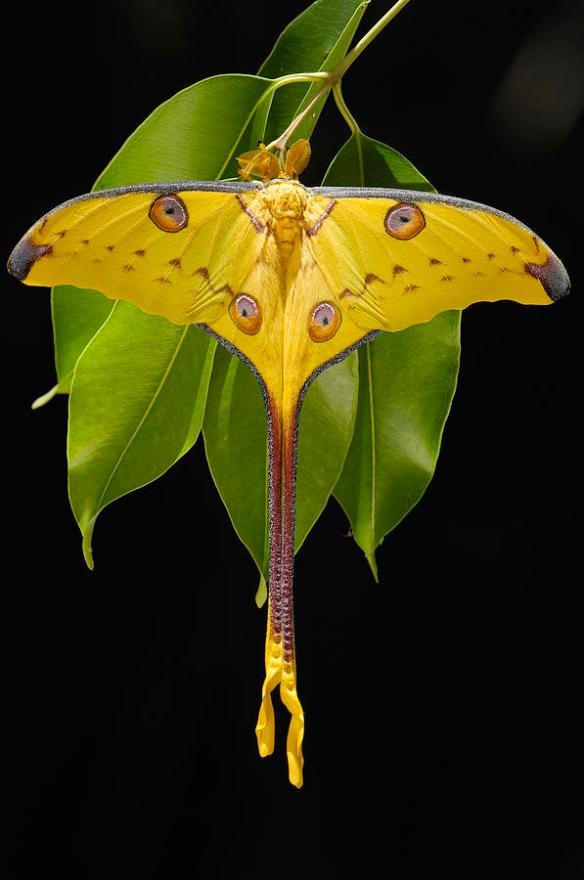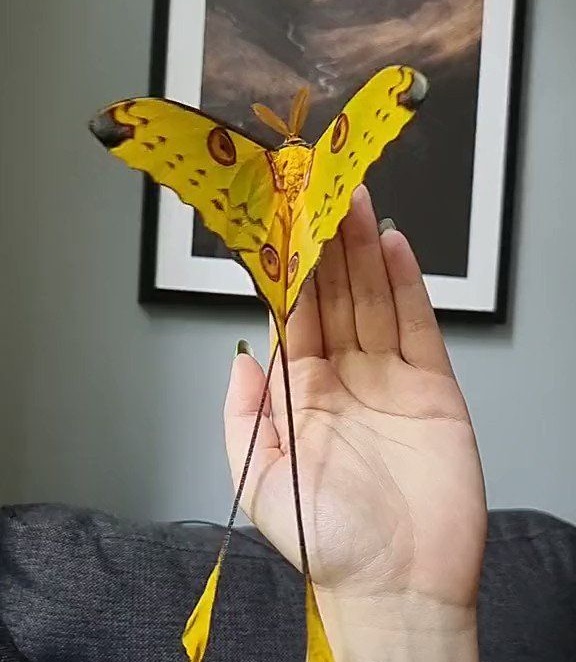
The comet moth (Argema mittrei) or Madagascan moon moth is a native to the rain forests of Madagascar. It is one of the world’s largest silk moths, with a wingspan of up to 20 centimeters and a tail span of up to 15 centimeters.
Comet moths are known for their beautiful and intricate wings. The wings are yellowish-brown with large eyespots and dark markings. The eyespots are thought to help to protect the moth from predators, making them look larger and more dangerous than they actually are.

Comet moths are a vital part of the Madagascan ecosystem. They help to pollinate many plants, and they are also a food source for bats and other animals.
Life Cycle
Comet moths have a short lifespan, lasting only about five days as adults. During this time, they do not eat or drink. Instead, they focus on mating and reproducing.

The female comet moth lays her eggs on the leaves of trees. The eggs hatch into caterpillars, which feed on the leaves of the trees. After about two months, the caterpillars pupate.
The pupa stage lasts for about four to six weeks. During this time, the caterpillar transforms into an adult moth.
Conservation
The comet moth is a threatened species. It is threatened by habitat loss and fragmentation, as well as the collection of moths and caterpillars for the pet trade.

Conservation efforts are underway to protect the comet moth. These efforts include establishing protected areas and educating local communities about the importance of the moth.
How to Help

You can help to protect the comet moth by supporting conservation efforts. You can also help by educating others about the importance of the moth and by avoiding the purchase of moths and caterpillars from the pet trade.

Leave a Reply